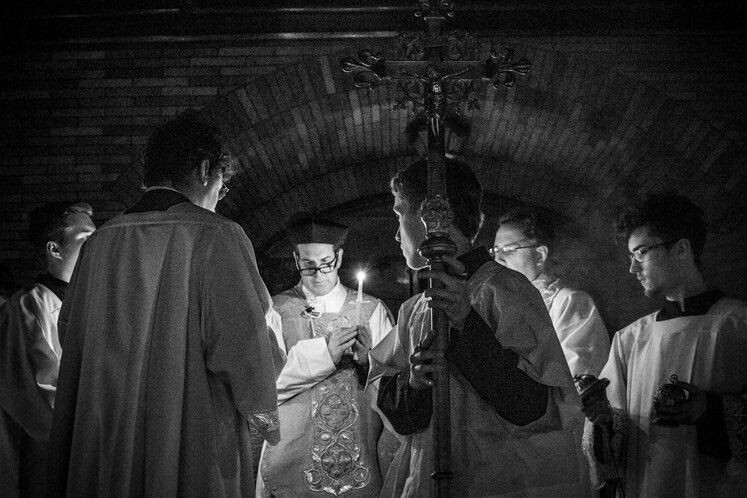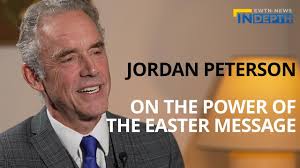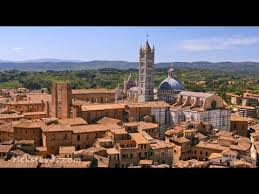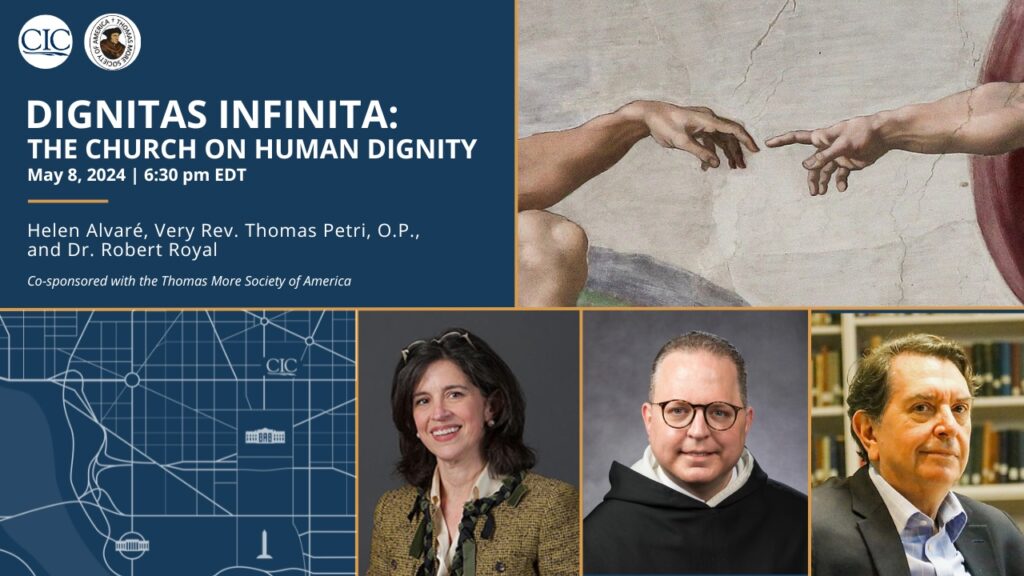The words we use to describe our politics and parties – liberal, conservative, etc. – don’t always translate very well into ecclesial life. They don’t always translate, but they sometimes do, or nearly do, which makes their application to the Church tantalizing, even as it leads to problems and confusion along the way. “Liberal” and “conservative” are convenient handles for describing, say, certain prominent modes of interpretation of the Second Vatican Council. But they are also, usually, relative terms that require context: Liberal in what regard? Conservative compared to what?
My EPPC colleague, Brad Littlejohn, recently made an interesting point along these same lines. “For the more than five decades since,” he writes, “conservatives have continued to appeal to what they felt sure was that silent majority, a median-voter demographic that didn’t like abortion, didn’t like same-sex marriage, and was ready to join them in opposing the ‘woke elites.’”
Where, Littlejohn asks, did that silent majority go?
Observing that half of Americans alive today were born after 1985, Littlejohn makes the following observation:
Americans are still conservative in a sense, but it is now radical individualism and materialism that many want to conserve. For decades they’ve soaked in that worldview, from influences as different as Supreme Court decisions and Seinfeld episodes. The median voter, then, will still go to the ballot to protest runaway immigration, for that is a disruption of the world he knows, but he will not go to the ballot to protest abortion, for that is the world he knows.
The successive (and seemingly accelerating) pace of cultural change means that each generation comes of age with a sense of what is normal which is very different from the previous generation. Which means that to “conserve” the familiar values and norms on which one was raised changes meaning dramatically from one generation to the next.
This would also seem to explain, at least in part, why our contemporary culture can be both paralyzed by nostalgia and, at the same time, incapable of transmitting basic social norms and traditions from one generation to the next. The notion that history repeats itself isn’t exactly a new one, but the cycles of repetition come so rapidly these days that they cause a sort of cultural accordion effect.
The renewal of a culture worth conserving – the building of a kind of “conservatism” that is more than just an instinctive defense of “the world I grew up with”– requires the long and arduous work of helping people to, as Littlejohn concludes, “recognize that there is a world more real and more true than the increasingly unreal one that has been presented to them.”
Which brings us back to the Church and to an article from the Associated Press that ran this week under the headline, “‘A step back in time’: America’s Catholic Church sees an immense shift toward the old ways.”
“Generations of Catholics who embraced the modernizing tide sparked in the 1960s by Vatican II,” the article declares, “are increasingly giving way to religious conservatives who believe the church has been twisted by change, with the promise of eternal salvation replaced by guitar Masses, parish food pantries and casual indifference to church doctrine.”

The article gets some things wrong. (The implication that parish food pantries are opposed by conservatives as some new-age innovation, is one example. Describing FOCUS as a “traditionalist organization,” is another.)
But unlike some clumsier attempts to explain current dynamics within the American Catholic Church through political categories, the AP, to its credit, acknowledges, “the movement, whether called conservative or orthodox or traditionalist or authentic, can be hard to define.”
One thing the article does capture is the dynamism and youth of this hard-to-define movement. And this alone is enough to make the article a remarkably reassuring and hopeful account of renewal in the American Catholic Church – if you are part of the movement.
Not everyone is happy of course. There is a sense of unease, pain even, as the trappings and style of the post-Conciliar years – “the guitar Masses. . .and casual indifference to church doctrine,” in the words of the AP – fade from many parishes only to be replaced by a homiletic emphasis on Confession and “the promise of eternal salvation.”
In other words, the Church most Americans “grew up with” is changing, perhaps disappearing. For many of the baptized, that is hard to accept.
A study we conducted through The Catholic Project at Catholic University showed that young priests are, in fact, much more likely to see themselves as theologically “orthodox” than their older peers. And almost none of them see themselves as liberal or progressive, theologically or politically. But the youngest priests, following decades-long trends, are also the most politically moderate and ethnically diverse of any cohort in the study.
And it’s not just the young priests who are this way. There are plenty of indications –the AP story included – that many of the most dynamic parts of the Church in the United States are following a similar trend.
The AP story notes – astutely, I think – that the nearest one can come to identifying the beginnings of this movement is in World Youth Day in Denver 1993. Which is to say that, at its root, this is neither a Traditionalist nor an anti-Francis trend (still less a Trumpian trend) long predating, as it does, both this pontificate and the rapid growth of TLM devotion in the wake of Summorum pontificum.
This shift is not best described by those words we borrow from politics. It’s worth considering that, in these long, organic developments in the Church in the United States – for all our problems – one can discern something of the sensus fidelium. It’s worth considering that this is simply what a mature reception of the Second Vatican Council looks like.
Perhaps, just perhaps, we’re seeing a new generation recognizing that there is a world more real and more true than the increasingly unreal one that has been, for too long, presented to them.
__________
You may also enjoy:
Fr. Gerald E. Murray Pope Francis Must Stop the Madness
Fr. Thomas G. Weinandy The American Catholic Church: A Defense
















